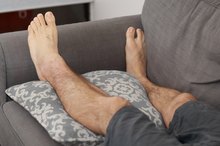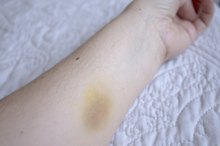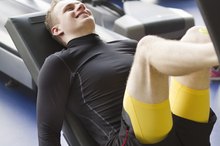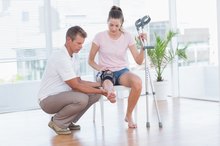How to Treat Soreness From a Shot
Soreness from a shot can result from one of three causes; inflammation from the injected substance, minor tissue damage caused by insertion of the needle, or infection. While the first two will clear up in a few days, with or without treatment, infection can be a serious complication and should be addressed by a physician. While there are standard methods to treat soreness from a shot, you should consult your health care provider if symptoms do not improve within 36 hours. If symptoms should worsen, contact your doctor immediately.
If you are experiencing serious medical symptoms, seek emergency treatment immediately.
Elevate the affected area so it is at the same level as your heart 1. This will decrease pressure to the injection site, reducing pain. For injection sites on the upper extremities, rest your arm on stacked pillows. For leg injections, sit on a chair and prop your feet up or lie flat. Lay prone, on your stomach or side, for shots to the buttocks.
How to Reduce Ankle Sprain Swelling
Learn More
Apply an ice pack to the sore area for the first 24 hours, after the injection, to reduce swelling 1. Hold the ice pack on the injection site for up to 15 minutes at a time. Remove the ice pack for 15 minutes and then reapply. This is to keep the ice pack from being in constant contact with the skin, possibly causing tissue damage.
Wrap a heating pad in a towel to protect the skin. Set the pad to “Low” and place the pad over the affected area after the first 24 hours have passed. Heat will increase circulation, speeding recovery by increasing oxygen supply to the site, assisting the body in building new cells. Increased circulation also speeds removal of damaged cells.
How to Get Rid of a Hematoma
Learn More
Take over the counter pain medication with anti-inflammatory properties, such as ibuprofen. Do not exceed the recommended dosage of pain medication, unless directed by your physician.
Related Articles
References
- “The Merck Manual: Home Health Handbook”; Robert Porter, Justin Kaplan and Barbara Homeier; 2009







